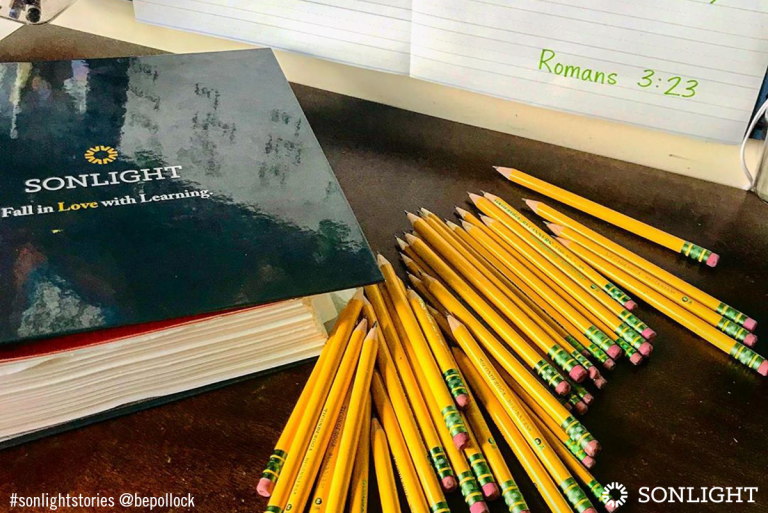
When I first started homeschooling, it never occurred to me to adapt to a particular homeschool philosophy. I hadn’t even realized that they existed! I simply ordered every single homeschool catalog I could get my hands on. When I found the Sonlight catalog, I couldn’t stop reading it. I was hooked. I ordered a full package and was ready to go.
A couple of years later, I noticed people around me were talking about homeschool philosophies. This friend thought classical education was best. Another thought unit studies were her answer while still another insisted that eclectic was the only way to go. Because I'm the type who needs to try every option to make sure I’m not missing out, I immediately began to investigate and add certain aspects to our homeschooling day from various methodologies, one after the other.
Here is my own homeschooling journey through seven homeschool philosophies and what I discovered along the way.
1. The Charlotte Mason Philosophy
Charlotte Mason was a wonderful teacher who taught young children over 100 years ago. She loved living books (books that get you involved in the story, rather than have you memorize facts). Into her curriculum, she wove nature and observation. She was always trying to find better ways to teach young children by keeping them engaged. A firm believer in letting a child explore and learn on their own, she championed nature walks, narration, and journaling. Charlotte Mason sounds like someone who could have been my friend!
We were already using living books with Sonlight. Narration was there, too, in the form of Sonlight’s discussion questions.
However, a strict Charlotte Mason lifestyle was not for us. First of all, we didn’t live in an area that lent itself to safe nature walks without driving a considerable distance or paying fees. Because of dyslexia, journaling was more of a battle than a fun activity, and many of the books Miss Mason recommends are fairly dated.
We did add several books to our collection, but we found many were just not as interesting as newer books that had been published after Miss Mason's time. We also liked to intersperse our enlightening reading with a bit of twaddle to lighten things up. (Twaddle is an absolute no-no for Charlotte Mason purists.) Also, looking into the future, we saw that Charlotte Mason was light on middle and high school education, as she focused primarily on the younger children she regularly taught.
I’m always a little surprised when my friends insist upon adhering to a strict Charlotte Mason methodology and using only the books she would have used. This is rather confusing to me, because the one person who thought that Charlotte’s ideas should not be used as a strict guideline for every child and was always searching for ways to improve the curriculum was Charlotte Mason herself. She prided herself on growth and change, based on observations of the individual child.
Sonlight and Charlotte Mason
So while Charlotte Mason comprises an excellent philosophy, with Sonlight I'm able to take advantage of all those things Charlotte Mason didn’t have access to, and create a balanced blend of old and new.
2. Classical Homeschooling
Teaching the Trivium goes back to the times of Ancient Greece and before. The curriculum is largely centered upon The Great Books, a collection of classical works that have lasted through time and stimulate the Great Conversations throughout history. The study of Hebrew, Greek, and Latin is encouraged for reading books in their original languages and for building a strong foundation in logic.
Implementing the Grammar phase was pretty easy. My children learn best through music, so adding in songs and jingles was no hardship at all. But despite our memorization of events and dates, I felt that the living books from Sonlight actually stuck with them more. With Sonlight curriculum, they were learning without even trying. The Classical method seemed too uptight and rigorous for us. Sonlight also helped my children develop through the logic and rhetoric phases in a way that better fit my relaxed personality.
Sonlight and Classical Homeschooling
Sonlight provides a great framework for adding many of The Great Books. We did add some, but, to be honest, I was getting just as bored with some of the Great Books as my children were. We still add in a couple books per year and keep a plethora of educational songs on hand, but by and large, we’ve left behind the Classical method. After all, with translations, the classical works can be read in English and not in dead languages.
We found that reading a lot of difficult books very fast was not enjoyable for my dyslexic children, even on audiobook. I easily let go of the more rigid confines of the curriculum to suit our more relaxed homeschool style. Sonlight balanced out the parts we were missing.
3. The Montessori Method
I originally thought Montessori would be a great method for my little ones, as it incorporates hands-on methods and is almost completely child-led. There are many specialized manipulatives you can purchase or create yourself to stimulate learning. While I did do a rotation at a Montessori school in my education, I did not seek out teaching credentials, nor do most homeschooling parents need to.
However, implementing the Montessori method at home proved to be much more challenging than I anticipated. First of all, it was very expensive, required vast amounts of manipulatives and print outs, and it took a lot of time to prep all the small pieces.
But the biggest drawback to me was that my children left the activities behind so quickly. I had at one point ordered a Montessori box delivered to our house each month. My children would play with it all day the first day, and then barely touch it again after that. The activities were delightful while they lasted, but they never lasted long. If we had access to the huge amount of resources in a classroom, we may have had more success, but at home, there really was only so much I could provide at a time. And Montessori really only goes so high. Eventually a Montessori educator has to change methodology as they move into the higher grade levels.
Sonlight and Montessori
Sonlight has recently added more hands-on to their programs, and my children have been enjoying those, but in our house, books are our main manipulatives. My children return to their favorite books time and again, and some of our books have been read so many times they have literally fallen apart.
4. The School-at-Home Approach
We’ve tried the school-at-home method a few different times, using different traditional programs—both textbook and online. These programs are nice, because they provide everything you need and guarantee a complete education. But, for a variety of reasons, they just didn’t work well for our family.
First of all, we have a love/hate relationship with textbooks/workbooks. Usually, it would start out with my children flying through 40 or more pages of their workbooks. But it would invariably wind up with half-completed workbooks lying around and nobody with the energy to finish them. I had a hard time with workbooks myself in school, never turning in my homework, and hating the sheer amount of busywork. Obviously, I had a hard time forcing my children to push through when there were a couple dozen workbooks per grade level.
But the hardest part for me was grading them. There were just so many workbooks, and they all had to be graded daily. Even with accredited programs, the parent still needs to grade or monitor the grades in all the programs. When you have 5 children each doing over a dozen workbooks a day, that adds up quickly.
Also, the amount of screen time increased because of all the videos for the classes. In short, I grew uncomfortable exchanging our fun, comfortable stories around the sofa for a bunch of children locked in different rooms all day, watching videos. So we eventually wound up dropping the school-at-home approach.
Sonlight and School-at-Home
We use Sonlight’s carefully selected workbooks to give us just enough of a school feel. But the bulk of our curriculum comes from the living books we enjoy as Readers and Read-Alouds.
5. Unit Studies
If I had unlimited time and money, I would probably dive deep into unit studies and love every minute. But the truth is this method relies heavily on the parent to do the planning:
- research materials
- screen resources for content and difficulty
- organize everything into a cohesive study
- create a schedule for the study
- balance all the different academic subjects so nothing is left out
My biggest difficulty with unit studies was getting bogged down in the extensive planning. I'd work on a six-week unit study and end up with enough materials to fill a full school year! Then I struggled with what to leave out or how to extend it without going over the same material 7,000 times and boring my children.
Sonlight and Unit Studies
Eventually I came to realize that Sonlight really is just a series of unit studies, all planned out, scheduled, and ready to go. There's almost no prep work needed on my part.
Instead of planning unit studies, I can use Sonlight as our unit study base and add on to it as our interests lead. Adding to Sonlight is usually unnecessary, but that still doesn’t stop me from layering on extras! Sometimes my kids and I just want more on a particular topic.
6. Unschooling
Before I started trying out various methods of education, I would have guessed that unschooling would be the most effective for my children. They are often highly motivated to learn (translation: obsess) about certain topics, and they enjoy reading about almost anything.
However, I have discovered they aren’t quite the unschoolers I thought they were. There are certain subjects they will go out of their way to avoid. While they do follow my lead when it comes to our studies, if left to their own devices, there are huge chunks of topics they would omit altogether.
Sonlight and Unschooling
So we have created a method I call Sonlight unschooling by unit study. It’s a bit of a mess and hard to describe, but basically we work through one Sonlight History / Bible/ Literature program per year per child, and whenever they become interested in a particular topic, I load them up with extra materials and projects.
As I keep moving through Sonlight, we find another topic and repeat. Some explorations are short (10 -120 minutes) and others are longer (a few weeks). But we always come back to Sonlight as our base for deeper exploration.
7. Eclectic Homeschooling
The eclectic method describes my homeschool best of all. The eclectic approach is simply taking a little bit from two or more methods and compiling what works best for each individual homeschool. Some families combine a school-at-home approach with a classical education, while others find private online schools with bits of Sonlight tied in. This do-whatever-works style is very common among experienced homeschoolers!
Sonlight and Eclectic Homeschooling
My children and I are eclectic unschoolers who use Sonlight as a base to create unschooled unit studies. Sometimes we add a few Charlotte Mason or classical techniques and materials.
That's my current homeschool approach in a nutshell.
I’ve tried all of these seven homeschooling methods and more, and the one item I can’t leave behind is Sonlight curriculum. For the past 14 years, it has been the foundation that assures me we are covering everything we need. Yet it creates so much interest that my children can’t help wanting to go deeper.
My typical response when asked, “Which homeschool philosophy do you use?” is “Sonlight.” That’s all I really need to say to describe it.


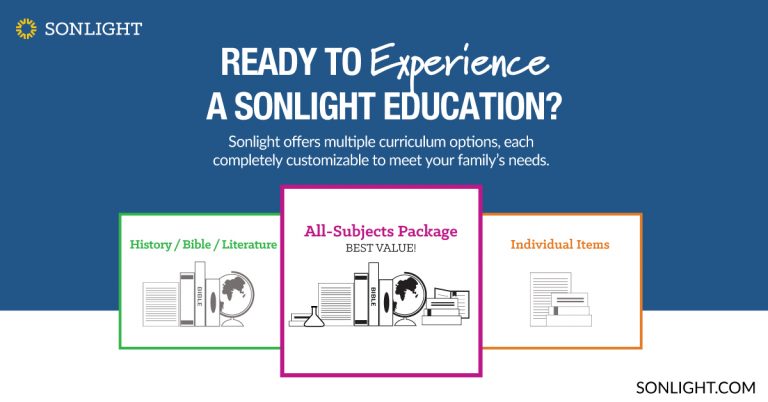
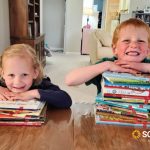
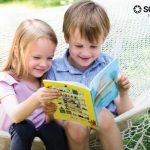
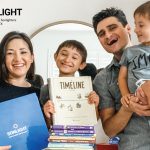

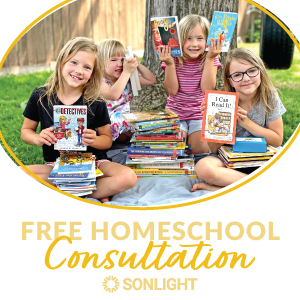

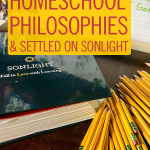
This was so helpful! I am definitely an eclectic homeschooler who has a love for many of the other styles as well so I enjoyed your take and how Sonlight fits in with each one.
Thank you!
Wow! Me too
I’ve homeschooled with Sonlight for 20 years and arrived at the same place as you!...eclectic, unschooling, oh but we need at unit study here! All while using Sonlight as a reliable base to launch from.
This post was informative and helpful! I've been "studying" these methods and despite all my efforts, all it left me with was my interest in certain ways and indicision on any one path. I feel so much more comfortable "choosing" now. Thank you!